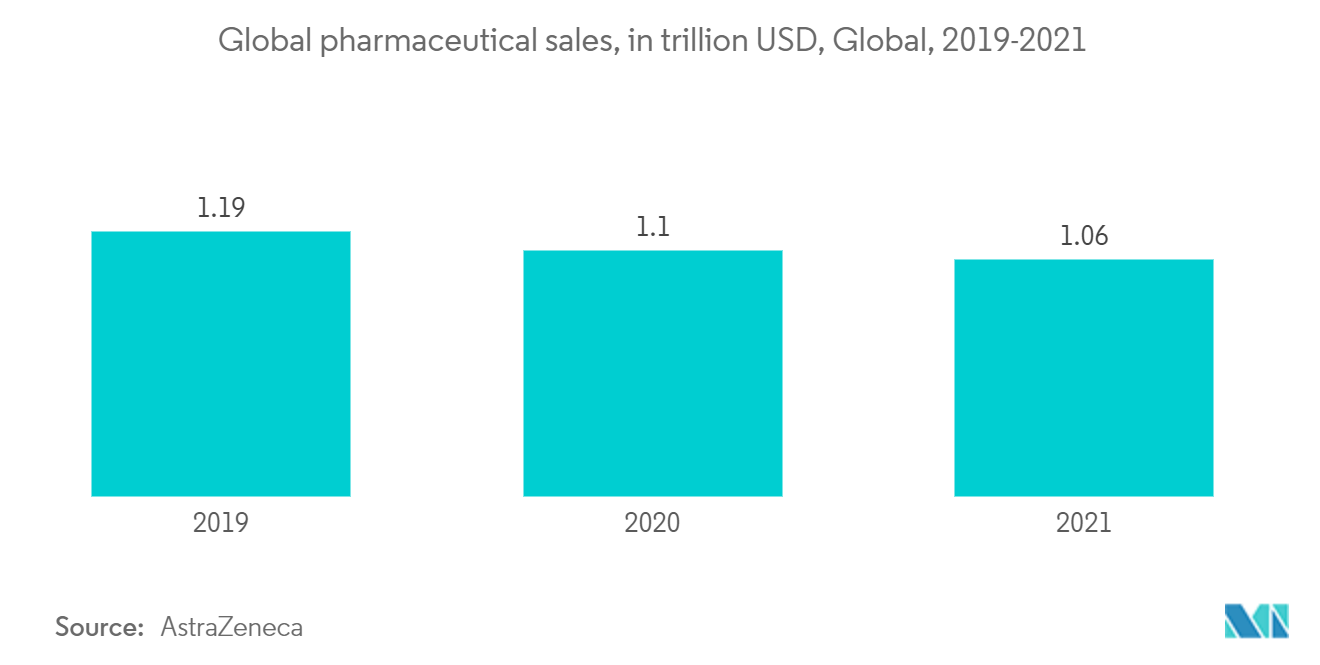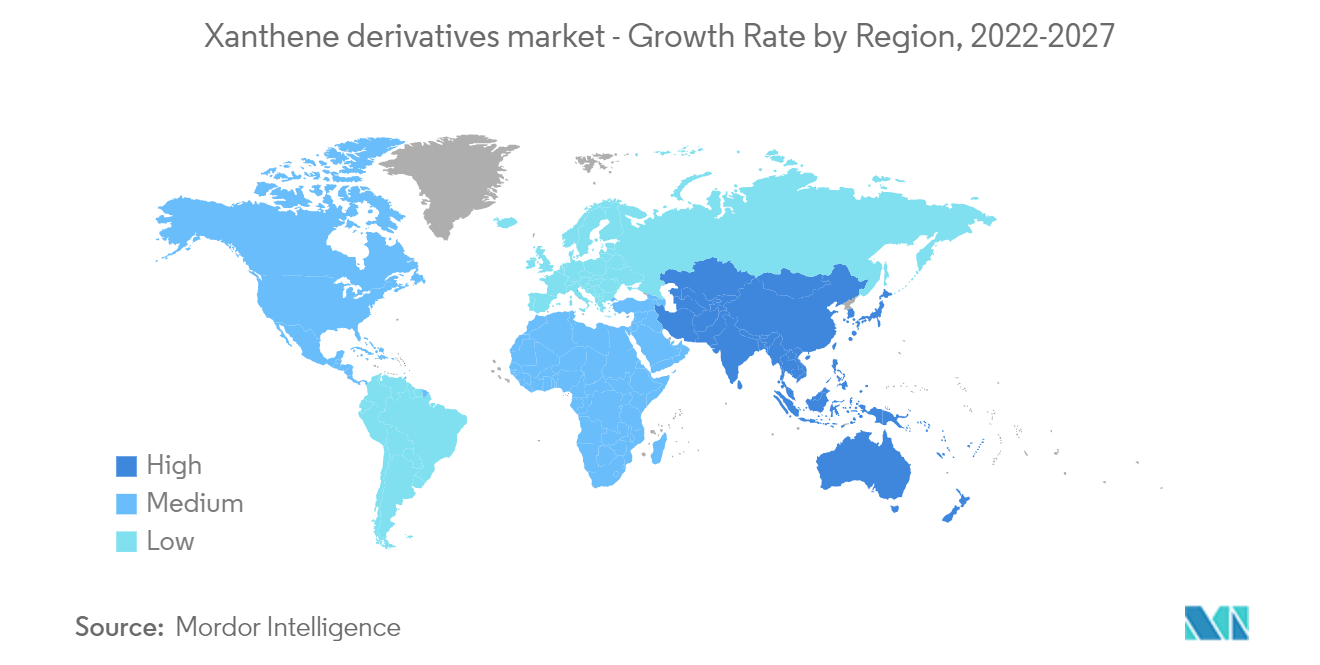Market Trends of Xanthene Derivatives Industry
This section covers the major market trends shaping the Xanthene Derivatives Market according to our research experts:
Rising Demand for Xanthene Derivatives from Pharmaceutical Industry
- Research and development opportunities in the pharmaceutical industry are growing quickly, and the main use of xanthene derivatives is in making and testing medicines. This gives the market studied a big chance to grow.
- According to the World Health Organization, one in every six adults and one in every three children suffer from asthma. Xanthine-category drugs (salbutamol sulfate) are used to treat asthma patients in combination with theophylline, which is available as a mouth-dissolving film called Theo-Asthalin.
- Xanthene dyes, including rhodamines and fluoresceines, have recently been developed into fluorescent probes that assist in clarifying functions in biological systems. This innovation is also increasing the consumption of xanthene derivatives in the pharmaceutical industry.
- The two major derivatives of xanthene are fluorescence and eosin. Fluorescence is primarily used in eye drops to treat eye injuries such as corneal abrasions, blurry vision, corneal ulcers, and herpetic corneal infections, while eosin is used to diagnose cancer cells. This fact sheet contains information regarding the consumption of xanthene derivatives in the pharmaceutical industry.
- AstraZeneca says that the global market for asthma will be worth USD 23.4 billion in 2021. This shows that the xanthene derivatives market in the pharmaceutical industry has a chance to grow.
- Taking all of these things into account, the pharmaceutical application segment of the xanthene derivatives market is likely to see a big increase in demand in the near future.

Asia-Pacific Region to Dominate the Market
- Increasing demand for xanthene derivatives from the pharmaceutical sector in Asian countries such as India, China, and Japan is driving the growth of the target industry in the Asia-Pacific. China is Asia-Pacific's largest consumer of xanthene derivatives.
- Xanthene additives are used in the food and cosmetics industries as coloring agents. Asia Pacific holds a considerable market share in this sector, which is also witnessing growth in derivatives of xanthene.
- According to the Ministry of Industry and Information Technology (China), China generated a total profit of about CNY 618.7 billion (USD 91.39 billion) in the food sector in 2021, a slight decrease of 0.3% as compared to the previous year, indicating the biggest market in the food sector in Asia-Pacific. This is another reason to dominate the xanthene market in Asia-Pacific.
- According to AstraZeneca, in 2021, global pharmaceutical sales will increase by 7.7%, accounting for a total value of USD 1.186 trillion. This trend is expected to support the study market.
- According to L'Oreal's research, the cosmetic industry in North Asia holds 35% of the market by revenue. By percentage, this is a significantly higher share than in other regions. It is evident from this that Asia-Pacific provides a huge market opportunity for the cosmetic industry, which is reflected in the fact that the xanthene derivatives market is growing in the region.
- All of these things are likely to help the xanthene derivatives market in Asia-Pacific grow over the next few years.


